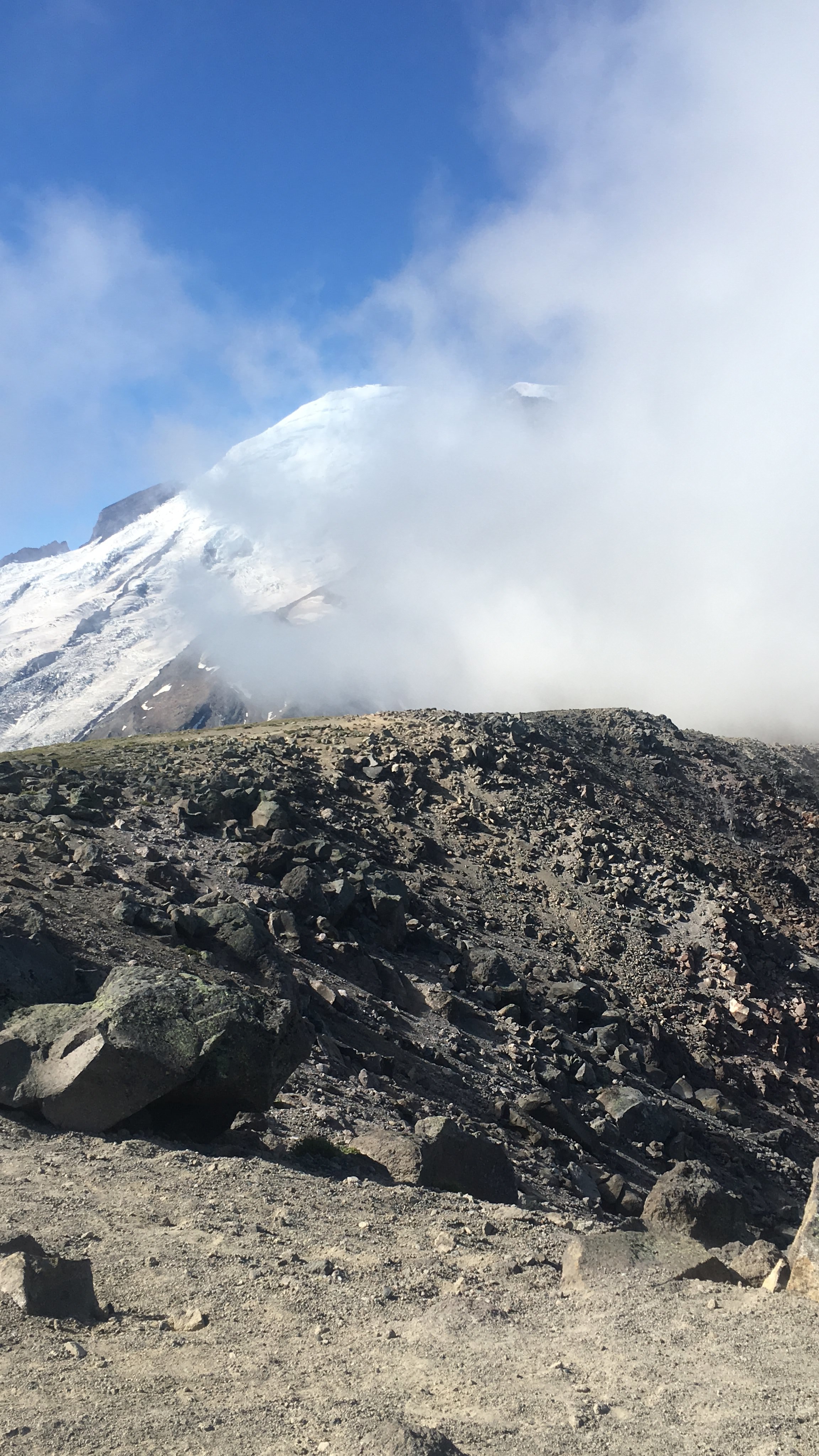Mount Rainier Wildflowers
You can picture it - the perfect day hiking. The skies above are a rich summer blue and the trail before you stretches off into the distance as a carpet of wildflowers spreads out on either side. Bird calls break the tranquil silence and a gentle breeze dries the sweat on your brow.
But how do you know when to visit Mount Rainier to make your hiking dreams come true? The answer, unfortunately, is…it depends.
Because of Mount Rainier’s high elevation in the Cascade Mountains, the wildflower bloom is directly dependent upon the retreating snows. If there was a large snowpack on the mountain over the winter, then it takes longer to melt, and the wildflowers are a bit delayed in making their appearance. Particularly in those high mountain meadows we all dream of.
If it was a light snowpack with a warm spring then the flowers are quick to get busy. Wildflowers at Mount Rainier have an incredibly short growing season. They must grow, bloom, and seed all in between the time of the snows melting in late June, to the snows returning in late September. Leaving just three months to do their business.
When is the best time to visit Mt. Rainier for best wildflower viewing?
Ideally, the best time to visit Mount Rainier National Park for wildflowers is in July and August. Although you will see wildflowers throughout the summer months of late June, July, August and early September depending on the type of flower and on the elevations you visit.
Our hikes take place at 6,400’ and above so what we’ll see as the snow first retreats is the explosion of lupine first (those tall purple flowers), and then quickly followed by the stunning mountain heather in pink, white and yellows. Bear grass also is quick to make an appearance before it’s seed heads and the plant become almost unnoticeable.
The stunning red Indian Paintbrush and Magenta Paintbrush tends to hang around most of the summer, accompanied by purple aster. Phlox and purple rock penstemon blanket the ground. These are the hardy wildflowers that cling to rocks on the windswept high subalpine tundra.
Late in the summer in September pearly everlasting attracts a plethora of butterflies to it’s delicate white flowers.
Lower elevations that hold more moisture from melting snows is where you’ll find the more delicate flowers. Trillium, avalanche lilies and tiger lilies enjoy the moist ground the retreating snows leave behind. Look for avalanche lilies in - you guessed it - avalanche chutes. Comet Falls is at a lower elevation and in June we’ll find loads of avalanche lilies. Their white pedals chasing the dirty, old snow away. Their bloom is short and they usually don’t last into July.
Where is the best location at Mt. Rainier for wildflowers?
Ideally you are looking for meadows and areas where the trees have not choked out all the vegetation. These beautiful flowers need sunlight and pollinators such as flies, butterflies and bees to help them in their journey. Meadows abound at Mount Rainier and those with the easiest access are as follows:
Sunrise: Burroughs Mountain and Sunrise Loop through Shadow Lake. Can also head to Berkley Park from Sunrise for a longer hike.
Paradise: Skyline Trail, Glacier Vista Trail, High Lakes Trail
Mowich Lake: Spray Park (usually accessible in July)
Others worth mentioning: Van Trump Park accessible above Comet Falls.
Now you certainly can see flowers in other locations as well but these are the most accessible and highly concentrated areas of wildflowers for most of us that are just doing day hikes on the mountain.




























